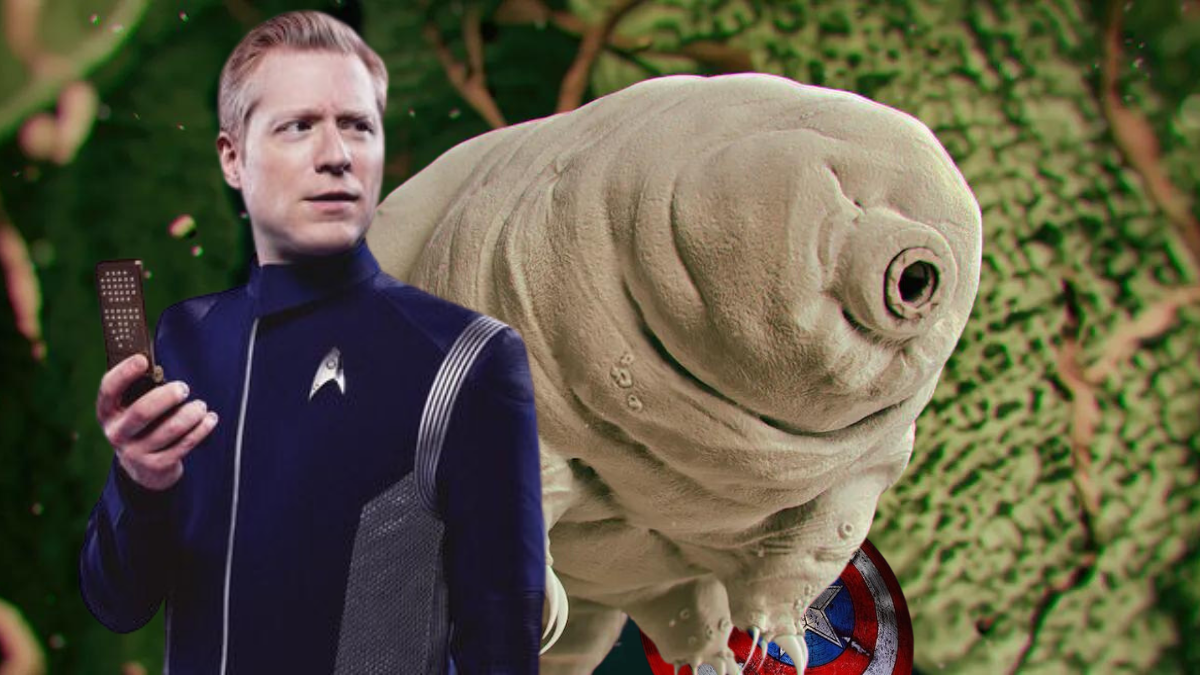SCIENCE: Researchers Combine Human Cells With Tardigrade Genes, Just Like a Certain 'Star Trek: Discovery' Character

Once again, life imitates art as scientists take a page from STAR TREK: DISCOVERY.
MAY 19, 2023 - The tardigrade, colloquially known as the “water bear,” is a small but hardy creature. The largest of these micro-animals can only grow to 0.059in (1.5mm) and can survive nearly anything, including extreme heat, extreme cold, the vacuum of space or extreme pressure, impacts of 900 meters per second, and 1,000 times more radiation than any other Earth animal. It can even survive navigating a starship through the mycelial network, as in Star Trek: Discovery’s first season.
This ability, however, did not come without a cost. When the crew learned that the process of jumping the eponymous ship using its mushroom-based spore drive not only caused the tardigrade they nicknamed “Ripper” great pain but had also begun damaging the frontal lobe of its brain, they let it go. Not before Commander Paul Stamets had injected himself with the creature’s DNA, allowing him to take control of the ship’s navigation duties.
Now, in the same way real life caught up to the science fiction of Star Trek with the development of transparent aluminum and holographic doctors, researchers in China seem to have taken a page from DISCO by combining tardigrade DNA with human stem cells.
With the tardigrade’s ability to live through nearly anything (except being shot out of a gun at over 825 meters per second, apparently) it’s not surprising that scientists decided to see what happens when you add it to a human’s physiology. The answer may lead the way in creating another concept from fiction: the super soldier, à la Marvel Comics’ Captain America.
According to a report in Militsary Medical Sciences, scientists in Beijing used a gene-editing tool to insert genes from a tardigrade into an artificially cultured human embryonic cells. The use of the term artificially cultured here is critical, because that’s what made the experiment legal. No actual humans were harmed in this expermient. As for the water bear, nobody seems to have shot it out of a gun, so it’s probably okay, too.
What the scientists found is not actually very surprising, if you know the tardigrade’s abilities. Once injected with the water bear’s genes, the human cells were able to withstand heretofore lethal levels of radiation, leading one researcher to comment, “This is amazing, considering the big difference between the water bear and a human.”
The study also found that combining the two types of genes “does not damage the vitality of cells, but can promote cell proliferation to a certain extent.” In layman’s terms, the tardigrade genes not only made the human cells stronger, but promoted accelerated growth. In addition, the gene transfer was clean, with the cells continuing to function normally. Based on the findings of the experiment, the team will go on to the next phase of work.
There’s no word yet what that next phase is, but the goal is clear: to ward off radiation sickness (and perhaps a host of other diseases) by injecting tardigrade DNA into human beings. And maybe someday the work of real-life mycologist Paul Stamets and the research being done with tardigrades in Beijing will come together, allowing humans to travel light years in an instant, just like on Star Trek: Discovery.
You can read more about the water beareakthrough on the Popular Mechanics website.
T is the Managing Editor for Daily Star Trek News and a contributing writer for Sherlock Holmes Magazine and a Shakespeare nerd. He may have been the last professional Stage Manager to work with Leonard Nimoy, has worked Off-Broadway and regionally, and is the union Stage Manager for Legacy Theatre, where he is currently working with Julie Andrews. after which he’ll be working on Richard III at Elm Shakespeare Company.





